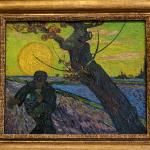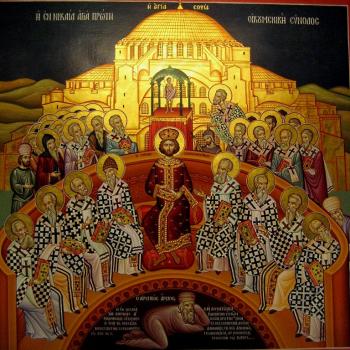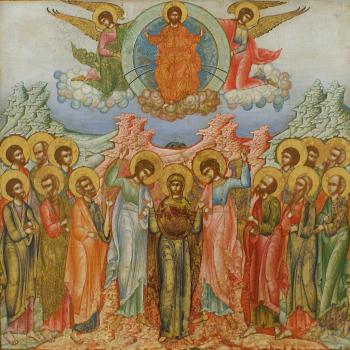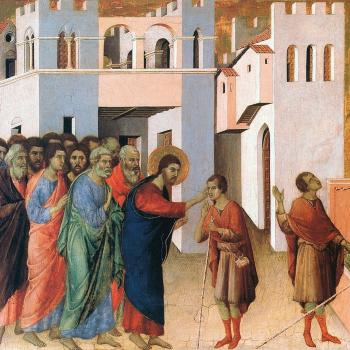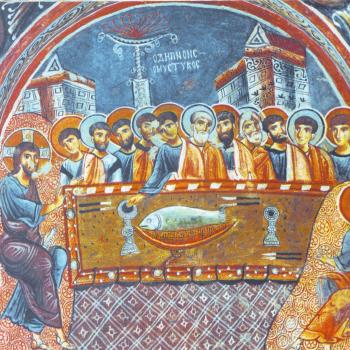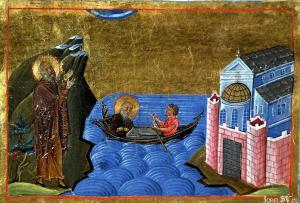 Iconoclasm was the last great heresy of the first millennium. While it is clear Christians had long used images in their worship, it is also true that many did not like them nor used them out of fear of idolatry. Indeed, many of the arguments used against idols seemed to apply to Christian images as well. For this reason, much of what the iconoclasts, those who denied the use of some if not all Christian use of images, was based upon truths which all Christians agreed. Iconoclasts employed their own understanding of the Torah, added elements of apophatical theology which suggested Christians should transcend the use of images, and came to the conclusion that no Christian should accept the use of icons, statues, and other images for ordinary Christian worship. Because of many of the truths which they employed, it was often hard for defenders of the use of images to address the iconoclasts; they had to show how the iconoclasts misunderstood and misapplied the tradition handed down to them; the way most iconophiles did this was to show how iconoclasm led to a Gnostic rejection of the implications of the incarnation of the Logos as man.
Iconoclasm was the last great heresy of the first millennium. While it is clear Christians had long used images in their worship, it is also true that many did not like them nor used them out of fear of idolatry. Indeed, many of the arguments used against idols seemed to apply to Christian images as well. For this reason, much of what the iconoclasts, those who denied the use of some if not all Christian use of images, was based upon truths which all Christians agreed. Iconoclasts employed their own understanding of the Torah, added elements of apophatical theology which suggested Christians should transcend the use of images, and came to the conclusion that no Christian should accept the use of icons, statues, and other images for ordinary Christian worship. Because of many of the truths which they employed, it was often hard for defenders of the use of images to address the iconoclasts; they had to show how the iconoclasts misunderstood and misapplied the tradition handed down to them; the way most iconophiles did this was to show how iconoclasm led to a Gnostic rejection of the implications of the incarnation of the Logos as man.
At the heart of the debate was whether or not God could be depicted. Apophaticism pointed out God transcended us; that God was incomprehensible, unable to be put down in words. As a consequence, iconoclasts suggested God should not be able to be imagined and therefore depicted by art. To imagine God would mean God could be comprehended; God would be seen as circumscribed by his image, which would limit him and so no longer make him the infinite absolute which is God. Indeed, such was often the argument Christians used against idols: they could not represent God for God, to be true, could not be what is represented by images.
The iconoclastic embrace of apophaticism forgot that apophaticism allowed for and established a symbolic theology by which Christians could discuss the mysteries of the faith. Christian theologians had something positive to say; apophatic theology had to make way for a kataphatic theology lest the Christian faith was unable to be discussed at all. Thus, theologians, even the iconoclasts themselves, would use words to describe God. This was possible so long as such words were understood to be representative pointers (symbols) for truths which transcend the words themselves. Likewise, Christian theologians said that our talk about God must come from God himself. They must not come out of the fanciful imaginations of the human mind. Theology is possible because God reveals himself to us; he transcends us and yet that revelation comes to us with God’s skillful means, so that can teach us the truth of himself at a level which the human mind can comprehend. Theology is a human enterprise, working to understand and express revelation, to teach skillfully the truths of the absolute in a conventional form, knowing that such conventions are symbolic and so are true so long as they are properly understood as conventions and not the absolute as it is in itself.
God reveals himself and offers ways for us to talk about him. Likewise, God provides the greatest revelation and the greatest means for us to discuss him in the incarnation of the Logos. God reveals himself in human form, giving us an image by which we know him, an image which we can use to represent him. Certainly the Logos, in his divinity, transcends his human image and yet in and through the mystery of the incarnation, we still have a way to depict him. Thus, St. Theodore the Studite explained:
If every image encompasses form, shape, appearance, and color, Christ, then, must be in all of these: according to the scripture indeed, “he took the form of a servant, and he was seen to have the shape of man.” And he had a dishonorable and lowly appearance, which indicates the bodily condition; as such he is portrayed in the very circumscription of his likeness.[1]
It is not that we created the image; rather, as with the rest of revelation, we work with the image and symbol God gave to us and use it. We cannot create it ourselves; we only use what God has established for our use and them employ it in our depiction of him:
Because what does Christ then say to Thomas? “Because you have seen me, you have believed. Blessed are those who did not see, and believe.” Therefore, as the apostles saw and handed down, both before and after the resurrection, so do we accept, and so do we circumscribe Christ. [2]
In the incarnation, apophatic theology gives way to revelation; the unknown God becomes known even if he remains incomprehensible to us. In the incarnation the eschaton becoming immanent bridging the invisible and visible worlds. God has given us a visible form which we can see him in the God-man, Jesus Christ, who as the God-man mediates and bridges the distance between God and man in himself. Through Jesus, we can come to know the Father. The incarnation overcomes any and all Gnostic rejection of the world by showing that the transcendence of God can be and is found in the world: the transcendent eschaton is immanent with us, revealing to us that the kingdom of God truly is within and in our midst. We are not called to reject the world but to purify it. While the Gnostics understood the value of transcendence, they went too far because they could not recognize how the eschaton could become immanent; this is why they could not believe in the incarnation and called it a deception by God. Christians proclaim, against the Gnostics, that the eschaton truly did become immanent, that God became man and it was true flesh and blood which was seen and touched when Jesus was encountered. The incarnation brought to earth the glory of the kingdom of God, showing that the kingdom is not found apart from the world of creation. The kingdom of God does not reject the world but is in it. The world is not to be rejected, it is only to be encountered anew in Christ. In that revelation, then, we can depict the kingdom of God (which is why the saints can also be embraced by our images).
Of course, we must accept what we are doing when we make images; they are our artificial re-presentations of what is established in nature by God:
Whatever is artificial in creation is in imitation of what is natural; for in fact, nothing would be called artificial if it were not preceded by something that is natural. Thus, there is an artificial image of Christ, as he is himself the natural image of his mother, who gave birth to him. [3]
Images of Christ can bring us not only to Christ, but in touch with the spiritual vision of Christ that the artist producing an image had in its production, rendering to us a window into the kingdom of heaven. Obviously, it is that image which is key; we do not confuse the material of the artwork to be the same matter as in the body of Christ:
The image of Christ is nothing else but Christ, with the exception obviously of the substance, as has been indicated many times. Thus, it is the case that the veneration of the image is the same as the veneration of Christ; of course, the material of the image is not venerated, but rather only Christ who is expressed in likeness in the image. [4]
Any proper defense of icons ends up being a defense of the incarnation; to reject them is to reject the reality of what was touched and seen in history. St. Theodore the Studite, in his works, reminded Christians tempted to an earth-denying faith that by doing so, they ignore what was revealed in the incarnation itself. It is due to his love for Christ he was able to suffer much for this truth; his work helped preserve the truth of the incarnation from any Gnostic attempt to remove his image from our sight. Thus, after his vindication, he was recognized as a great Christological father, and the church venerates him as a great saint:
As partaker of incorruptible gifts thou wast thyself the Church’s gift, O Theodore: for in following sacred doctrines thou wast a light of true profession. Pray to Christ our God to grant us His great mercy (Troparion of St Theodore the Studite ).
[Image=11th-century Byzantine miniature representing Studion Monastery. From the Menologion of Basil II By Ghirlandajo at en.wikipedia (Transferred from en.wikipedia) [Public domain], from Wikimedia Commons]
[1] St. Theodore the Studite, “Third Refutation of the Iconoclasts” in Writings on Iconoclasm. Trans. Thomas Cattoi (New York: Newman Press, 2015), 92.
[2] St. Theodore the Studite, “Second Refutation of the Iconoclasts” in Writings on Iconoclasm. Trans. Thomas Cattoi (New York: Newman Press, 2015), 85.
[3] St. Theodore the Studite, “Third Refutation of the Iconoclasts,” 106.
[4] St. Theodore the Studite, “Third Refutation of the Iconoclasts,” 113.
Stay in touch! Like A Little Bit of Nothing on Facebook



